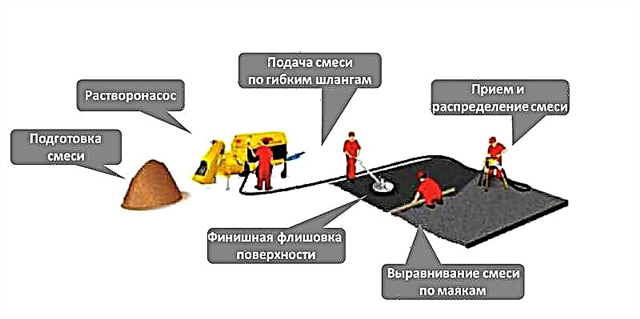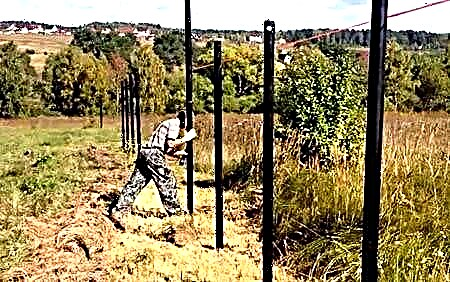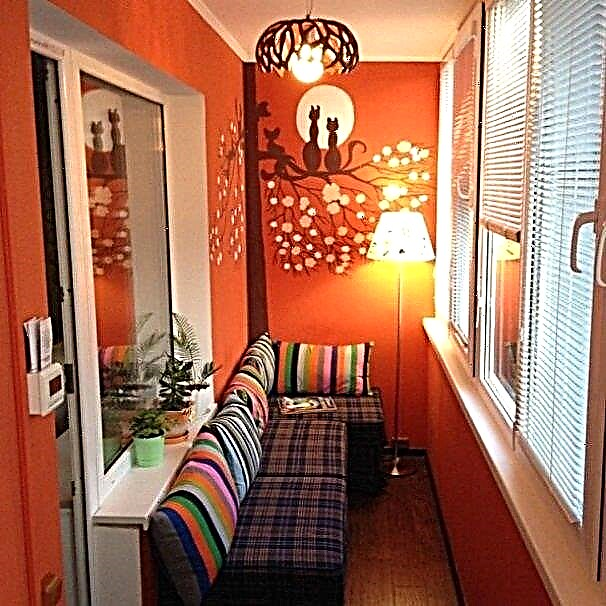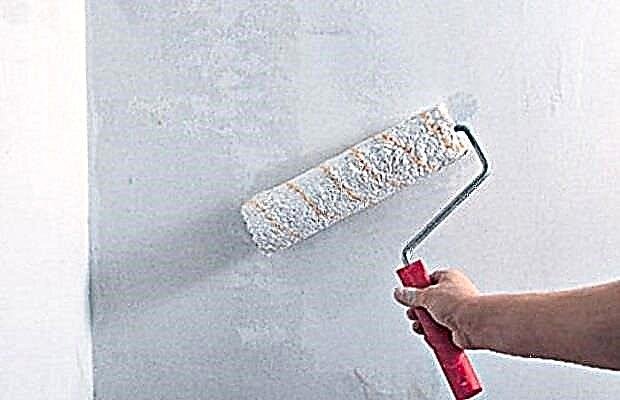
Before laying a fine floor covering it is necessary to check a surface for differences. To level the base, different technologies are used, one of them is a mechanized screed. The advantages of this method and installation rules will be discussed in the article.
What is a mechanized screed
Mechanized screed is a method of leveling the rough floor using special equipment. The whole process is automated, the use of technology makes it possible to obtain a coating with a different ripening period, which is important when laying a certain finishing material (laminate, linoleum, parquet, etc.)
To perform work from materials you will need: a dry mixture (sand, cement, fiber), damping tape and waterproofing. An automated process ensures the use of a trowel and a pneumosupercharger. Auxiliary means: roulette, level, rule. Installation takes an average of 10-12 hours.
As a result, after quality work, a mechanical-resistant coating is obtained, which has a soundproofing property. The main advantage of the method is a short installation time.

Types of mechanized floor screed
Mechanized screed is of three types.
• Wet screed is made of sand concrete with high moisture resistance. The drying period is 4 weeks. Depending on the floor finish used, various adjustments are made to the screed manufacturing process.
• Semi-dry screed mechanized is considered the most promising. The complexity of the process is minimized. This technology is ideal for large rooms. When processing with a trowel, it is possible to obtain a flat surface that is completely ready for laying the flooring.
• Dry mechanized screed is carried out similarly to the manual method of leveling the base with the help of dry bulk materials. The installation process is reduced thanks to the use of special equipment. The backfill surface is covered with gypsum fiber sheets.

Advantages and disadvantages
Floor screedmechanized, characterized by the following advantages:
• short term of "maturing",
• no reinforcing mesh is required, its functions are performed by fiber
• does not create a large load on the ceiling,
• the strength of the coating is not inferior to a screed made by a wet method,
• equivalent cost with similar methods of leveling floors,
• gives a little shrinkage,
• the solution sets quickly,
• cracking is excluded during operation.
There are practically no flaws in the technology. A feature is the need for special equipment. The quality of the coating is also influenced by the professionalism of the workers.

Advantages and disadvantages
Mechanized screed is a new approach in the construction of floors. Here, all the basic operations are performed by machines that are easy to configure for various performance and power.
Screeds formed by mechanical systems have several significant advantages:
- The top layer of the floor has a perfectly flat plane, which is suitable for almost any finishing coating.
- For the preparation of concrete solutions, much less water is used. This, in turn, speeds up the drying process of concrete. The screed is grouted a few hours after it is laid. But at the same time they use special shoes, which distributes the pressure on the surface of the floor.
Full drying is reduced to 1-2 weeks. A small amount of liquid prevents its leakage to the lower floors and damage to furniture or other structures.


- The use of machines speeds up the process of laying the screed several times. At the same time, there are no long technological breaks.
- Concrete solutions do not crack during drying. This is due to the minimum amount of water, as well as the addition of various types of reinforcing fibers (polypropylene, metal, fiberglass, etc.) to the composition.
- The use of grinding machines eliminates the application of additional self-leveling mixtures. Machine screed allows you to save on these products, completely replacing them.
- No dust inside. This is achieved due to the fact that all components of concrete are mixed outside the house. In this way, the maximum cleanliness of all surfaces is ensured.
- The mechanized screed lasts much longer than the manually laid layer.


But this approach is not universal, as it has several significant disadvantages:
- Installation work involves the use of several types of equipment. Their rental is quite expensive, which is not always effective for small areas.
- Screed laying is done only with the help of a few people with a certain experience.
- Construction companies do not undertake installation if the area of the premises is less than 100 m2, and this also affects the cost per unit area of the screed.
Given the numerous reviews, it can be noted that machine ties are a unique opportunity to get a high-quality surface that will perfectly cope with any loads.


When is it necessary?
The mechanized screed is characterized by quick drying and high strength.
It is used in several cases:
- Arrangement of concrete floors that will be used without finishing. Often these surfaces are found in garages or in warehouses.
- The need to harden old floors. This effect is achieved due to the fact that concrete is compacted with special vibratory machines, and this allows you to form a more solid structure.
- The formation of perfectly smooth surfaces. Very often, such screeds are made under a laminate or parquet, which are very demanding on elevations.
- Mechanized screeds are suitable for underfloor heating, as well as for those cases when it is necessary to ensure a high level of soundproofing of the floor.
- In some cases, under them you can hide communications that are laid under specific sources (pipes, electric cable and much more).


It should be understood that it is possible to solve the tasks described earlier with the help of classic screeds. But such surfaces will not be of high quality, and it is also not always possible to control their technical characteristics.
Equipment selection
Concrete laying is mechanized using several machines. This equipment is quite complex and consists of many nodes and controllers. To equip the screed, you need to stock up on several basic devices:
- Pnon-supercharger. This machine is somewhat reminiscent of a concrete mixer, since it is in it that the mixture is prepared. But the design is additionally equipped with a special pneumatic drive. It provides the supply of ready-made concrete to the installation site using powerful pumps and hoses. Some modifications are able to raise the solution to a height of 120 m.
- Vibrorail. The mechanism consists of rigid guides along which the sealing rail moves. Outwardly, it resembles a conventional bar, but it is driven by a special engine. This is necessary in order to better seal the concrete mortar, removing excess air from it.


- Disc grinder. The main purpose of this device is to level and seal the screed. The power of these devices can be different, which allows you to process significant areas in the shortest possible time.
- Wood cutter. This tool is used only in rooms with a large area. The mechanisms are equipped with special circular saws that form small cuts in the screed layer. This is necessary so that the concrete does not crack and quickly seizes upon drying.


Solution preparation
Concrete mixtures for these types of screeds practically do not differ in composition from classical mortars. Here they only reduce the dose of water, since mixing takes place in special bins.
Concrete preparation technology consists of the following sequential operations:
- Initially, a “mixer” is installed near the components (sand, cement, etc.). After that, the necessary proportions of all these products are calculated.
- When all the products are ready, start filling them into the hopper. For this you can use ordinary shovels. The main thing is to pre-measure the required amount of each component. Dry substances initially fall asleep, and then water is gradually added.
- The mixed solution with the help of pneumatic cylinders is piped into the room where it will be laid. To prevent the mixture from spraying, the pressure is preliminarily reduced in a special quencher tank.
During preparation, you should take into account the power of the system, which can vary from 4 to 6 cubic meters of concrete per hour.


The preparation of concrete mix is practically no different from mixing with a conventional concrete mixer. The system simply automatically pumps out the solution and delivers it to the desired point.
Technology
Laying a mechanized screed is possible not only for semi-dry mortar, but also for dry mixes. The main thing is to choose the right tool and prepare all the components.
The process of pouring screeds in an apartment or other room involves several sequential operations:
- Foundation preparation. This step is one of the most important, since the strength of the future design depends on it. It is advisable to fill the screed on a base on which there are no cracks or other damage. If they are present, it is advisable to pre-seal them with plaster or other solutions. After that, the surface is cleaned of dirt, and a waterproofing film is placed on it, which is desirable to be attached to the walls with a margin.
- Screed level marking. To do this, use beacons that are mounted around the entire perimeter of the room. It is recommended that all marks be made along the walls using a laser level. A damper tape must also be attached around the perimeter, which will perceive the expansion of concrete, while not allowing the floor to collapse.


- Filling the floor with concrete. This occurs using the previously described technology for the preparation and supply of the solution. It is important at the same time to evenly distribute the mixture on the surface, so that then you do not have to add it.
- Compaction and alignment. At this stage, a coupler is used, which consists of a bed and guides. The design is installed directly in concrete and takes a certain width. Then the vibration seal is turned on and the carriage with the seal comes into motion. At this point, the mixture begins to condense evenly. When the system has aligned one part, it is moved sequentially throughout the room. It is advisable to lay concrete in one room at once in order to form a solid and solid slab. All the strips where the guides were placed should be aligned independently upon completion of work. For this, the rule is the same concrete.


- Grouting and grinding the top layer of the screed. This process is performed after 2 hours after pouring. During this time, the solution will have time to acquire a small strength. Grouting occurs using special mechanisms, which also differ in power and control method. The quality of grinding with such a tool is very high, which makes it possible to perfectly level the top layer.
- Cutting expansion joints. They are formed using special milling cutters throughout the room. Often the seams are arranged in large squares. But their specific location depends on the structure of the building.
- Film protection. This is necessary to maintain optimal water balance on the surface of the screed.
The technology for producing a mechanical screed is quite simple, which allows it to be used both in winter and in summer. The main thing is to create a microclimate indoors.
Recommendations
Installation of the screed using mechanical systems requires compliance with several basic rules:
- To reduce the risk of cracking, experts recommend adding polypropylene fiber to semi-dry mixtures.
- After laying, it is advisable to water the screed for 3-5 days. This approach is an alternative to plastic wrap.


- Avoid the formation of drafts and elevated temperatures in the room. This will lead to rapid evaporation of moisture and the formation of cracks.
- In winter, you need to ensure that the top layer of the screed is not covered with ice.
- Sanding should be started if, with pressure on the surface with the foot, the solution sags to a depth of no more than 1 mm.


Mechanized screed is a completely new approach to flooring. The above algorithm of actions allows to obtain strong foundations that easily withstand heavy loads for a long time.
For more information on mechanized screed, see the video.
Mechanized (semi-dry) floor screed
This technology is characterized by a high level of automation and different ripening times for various floor coverings. What is necessary for a semi-dry floor screed?
- Materials: damping tape, waterproofing, working mixture (cement, sand, fiber).
- Equipment: pneumosupercharger, trowel.
- Tools: level, tape measure, rule.
- Installation time: 12 hours on average.
Installation steps:
- Preparing the base for screed, gluing damping tape, marking the floor, installing “beacons”, laying insulating material - the same as in wet screed technology. The damping tape in a semi-dry coupler performs the same functions as in wet.
- Solution preparation . The solution is kneaded automatically, immediately in the pneumosupercharger.
- Backfill . Since the semi-dry screed is made of loose material with a small water content, it is poured from the pneumatic blower along the “beacons”, leveled with the rule, and then rammed with a vibrator or manually.
- Drying . Before finishing, the screed should dry for 24 hours, after which you can walk on it.
- Finishing . It is carried out using a trowel.
- Care during the "ripening" . The period after which a semi-dry screed is considered to be “ripe” depends on the coating. Laminate and parquet can only be laid in 20–25 days, carpet in 14–20 days, linoleum in 12–14 days, tiles in 72 hours.
Result. Resistant to mechanical stress, soundproofing screed, made in the shortest possible time.
Pluses of a semi-dry coupler:
- A short period of "ripening".
- Automated technology.
- Reinforcing mesh is not needed (fiber is its role).
- In terms of strength and cost, a semi-dry screed is comparable to wet.
Cons dry screed : Requires special equipment and experienced professionals.
To summarize
For clarity, we have reduced the main parameters to a table, for ease of comparison (see table).
Table . Key Features of Floor Screed Technologies
| Characteristic | Type of screed | ||
|---|---|---|---|
| Dry | Wet | Semi dry | |
| Necessary equipment | Lighthouses | Concrete mixer, "beacons" | Pneumosupercharger, vibrator, trowel |
| Who can handle it? | Experienced Home Master | Almost any builder | Qualified team |
| Room temperature during installation | Any | Above + 5 ° C | Above + 5 ° C |
| Pedestrian loading after installation | Right away | Not earlier than 72 hours | Not earlier than 12 hours |
| Finishing | Not required | Self-leveling mixture may be required. | Grout |
| Laying the floor after installation | The next day | After 28-30 days | In 3–25 days |
| Price | From 1000 rub./m 2 |










